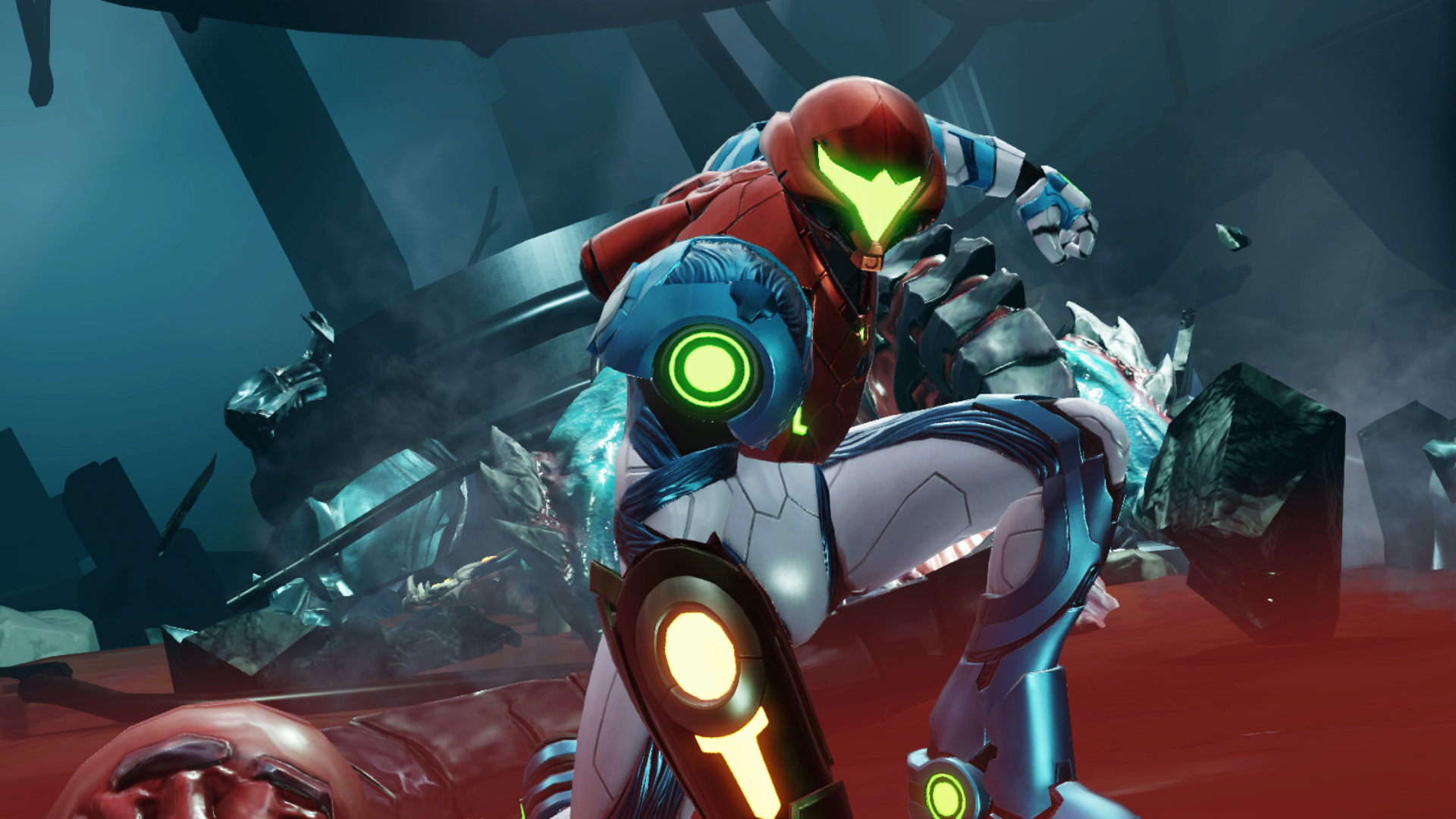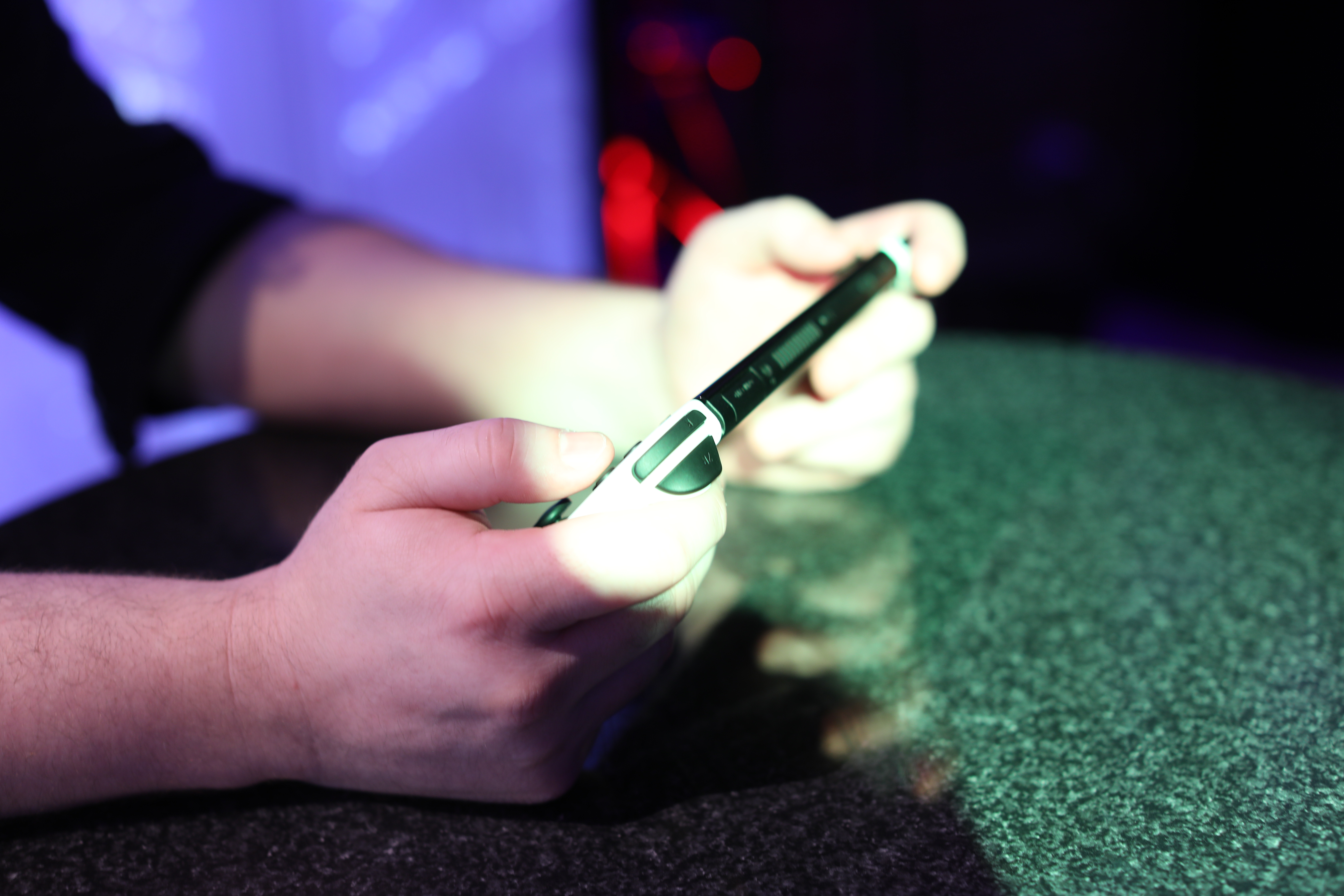It’s been a big year for Nintendo news. Between the impossible fever dream of last week’s Super Mario movie casting and the eagerly anticipated sequel to the Switch’s best game, it’s easy to lose track of the other big developments from the gaming giant.
Nintendo recently held an intimate (and sufficiently socially distanced) event in New York, bringing together two of its biggest products launching ahead of the holidays. The first is the arrival of the first 2D Metroid title in 19 years. The title was a surprise announcement during this year’s virtual E3.

Image Credits: Nintendo
In many ways, Metroid Dread took centerstage at the briefing, complete with cardboard character cutouts from the game, mood lighting and related sound effects being piped over the PA. More than anything, Nintendo wants to make it clear that the title is more than just a stopgap between now and whatever undetermined time in the future when the company finally releases Metroid Prime 4.
Of course, a game doesn’t mean much without something to play it on. That’s where the new Nintendo Switch — OLED Model — comes in. Yes, that’s t1he full, glorious name — and for what’s worth, the company has been pronouncing it O-L-E-D. It’s a bit jarring (and clumsy) at first for someone who’s grown so accustom to pronouncing the screen technology phonetically.

Image Credits: Brian Heater
If Metroid Dread was a slight disappointment for some of the fan-base due to it, well, not being Prime 4, the initial Switch OLED (as I will henceforth be referring to it) fell short of what many were expecting/hoping the company would be announcing on the hardware front. After all, at 3.5 years old, the Switch seems primed for a big makeover. Refresh cycles being what they are for consoles, hardware makers love to juice sales in their middle-age with some compelling new model.
This serves the dual-purpose of (hopefully) bringing long-time holdouts on board and convincing the devoted it’s time to upgrade to something shiny and new. It’s worth noting that, in mid-2019, Nintendo did introduce two models. There was a refresh of the standard Switch that addressed far and away the system’s biggest downside: battery. The company also added the $200 Switch Lite — a more affordable and portable version of the console that helped get me through the first year of this pandemic in one piece.

Image Credits: Nintendo
Rumors of a Switch Pro were at full-force ahead of E3. What arrived was, for many, underwhelming, featuring the same RAM and processor (Nvidia Tegra X1) as its predecessor and a slightly larger display (0.8 inches) than its predecessor. The seven-inch OLED is still 720p (1080p when docked), and not the the 4K some were expecting. It does add some other features, like a wired LAN connection and double the storage to 64GB, without ditching the microSD slot.

Image Credits: Brian Heater
Waiting to play, I snapped a few quick shots of some OLED models on display, showcasing demos of Mario Kart. The system is striking in its black and white stormtrooper colors. When I finally got my hands on the system, the first thing that struck me was the weight. Granted, playing the Switch Lite for the past year has messed with my perspective on the matter, but the Switch OLED is also heavier than its predecessor, up to 0.93 pounds from 0.88.
While not improving the resolution, the new OLED technology does bring some upgrades — namely deeper blacks and higher contrast than the original. It’s fitting then — and likely not entirely coincidental — that the system launches with a dark, subterranean title like Metroid Dread. It’s a nice combo, and the improved sound offers a tactile feedback for loud sounds — something you get a lot of when firing rockets from your arm cannon.

Image Credits: Nintendo
Still, the Switch OLED may be a hard sell for those who have the original. Metroid Dread, on the other, is a bit more of a no-brainer. I was only afforded the time to play the early stages, but the game triggered the same sensory receptors that made the original (and subsequent side-scrollers). The pulsating alien life forms are still in full-effect, now battling alongside the relentless and (in the early stage, at least) seemingly invulnerable E.M.M.I. robots that populate the game from the beginning.
Metroid Dread and the new Nintendo Switch OLED Model arrive together on October 8. The new system runs $350.
from TechCrunch https://ift.tt/3m6Y4WD
No comments:
Post a Comment